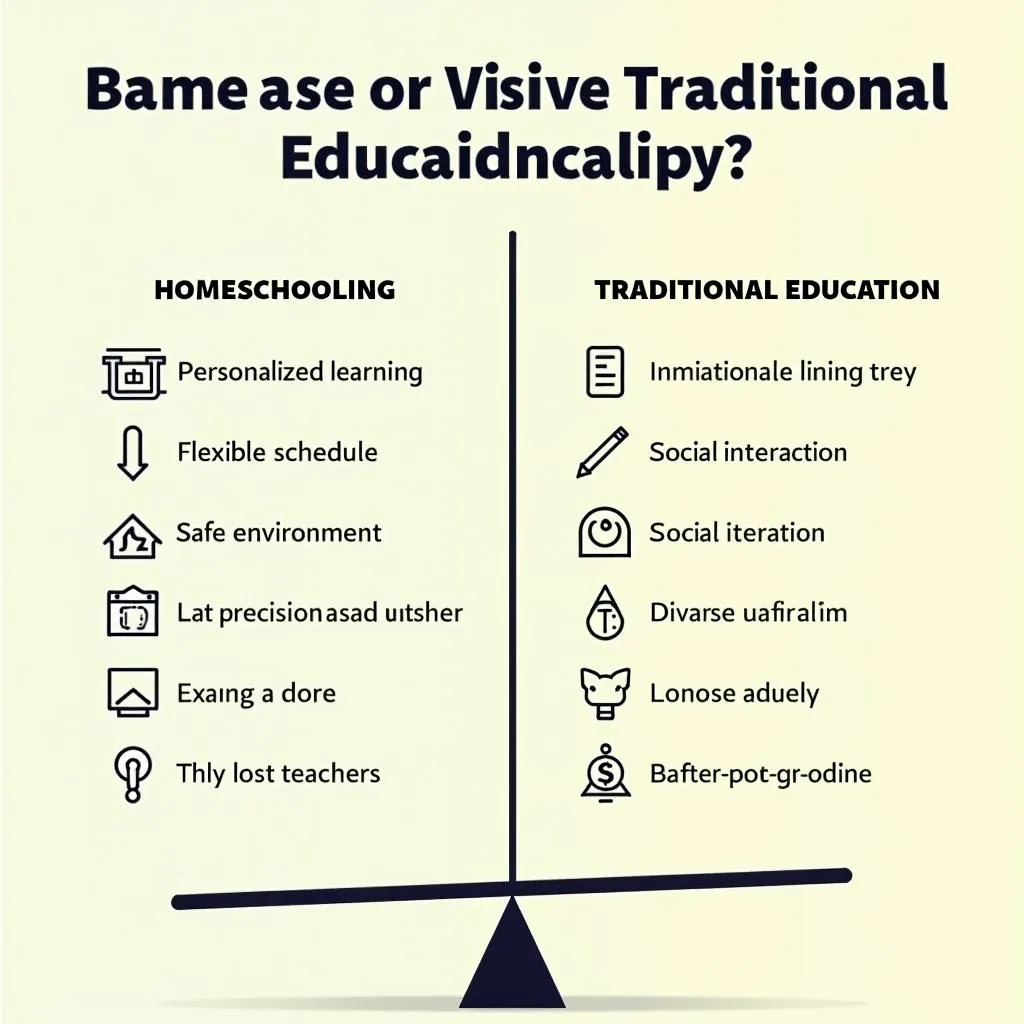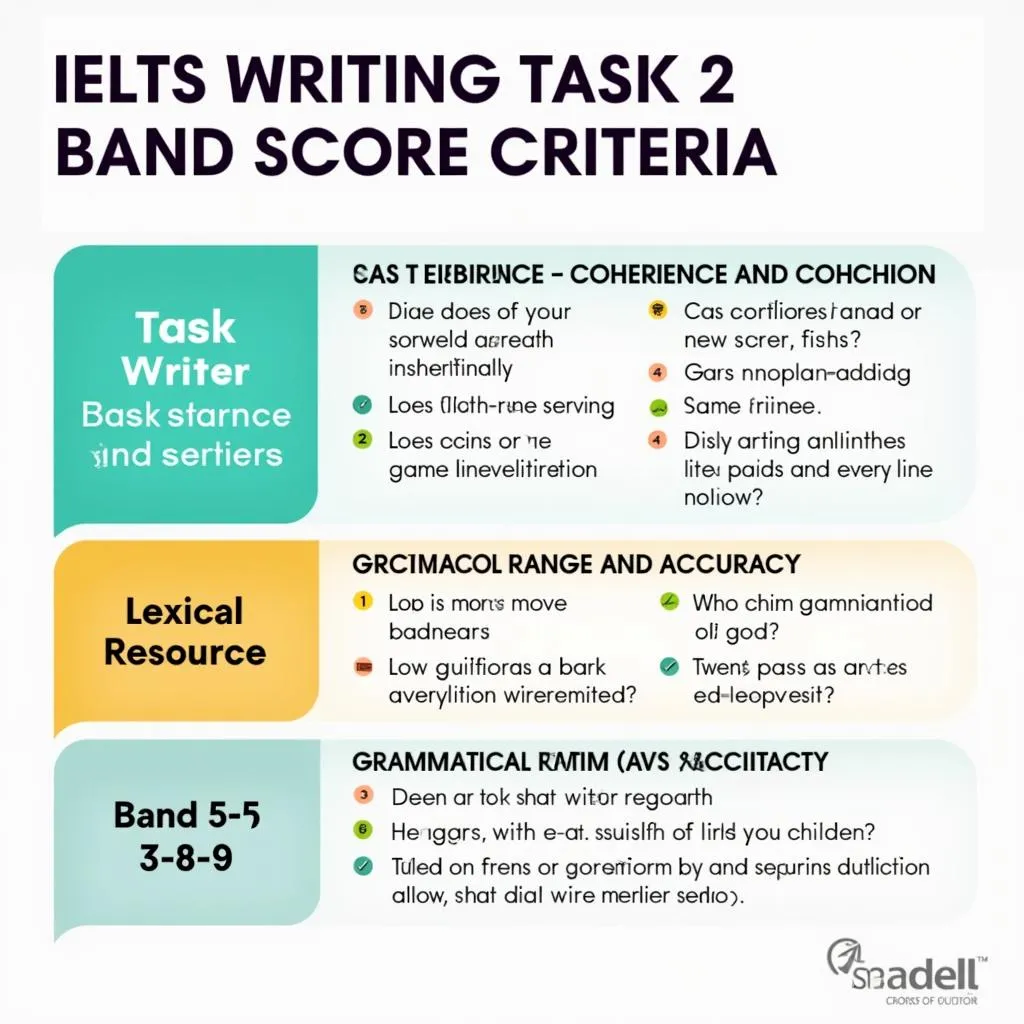The question of whether homeschooling is a viable alternative to traditional schooling has been a recurring theme in IELTS Writing Task 2 exams. This topic has appeared in various forms over the years, reflecting its relevance in contemporary education debates. Based on past trends and current educational discussions, it’s likely that this subject will continue to be featured in future IELTS exams.
Let’s examine a specific question that encapsulates this topic:
Some people believe that children should be educated at home by their parents rather than in traditional schools. Do you think the advantages of homeschooling outweigh the disadvantages?
Analyzing the Question
This question requires candidates to compare homeschooling with traditional schooling, focusing on the advantages and disadvantages of home education. The task is to evaluate whether the benefits of homeschooling are more significant than its drawbacks. This type of question falls under the “advantages and disadvantages” category, but with an added element of opinion.
Sample Essays
Band 8-9 Essay
The debate between homeschooling and traditional education has gained significant traction in recent years, with proponents on both sides presenting compelling arguments. While homeschooling offers certain advantages, I believe that the disadvantages outweigh these benefits, making traditional schooling a more viable option for most children.
Homeschooling undoubtedly provides some notable advantages. Firstly, it allows for a highly personalized learning experience tailored to each child’s unique needs and learning pace. Parents can adapt the curriculum and teaching methods to suit their child’s strengths and weaknesses, potentially leading to more effective learning. Additionally, homeschooling can foster a stronger family bond and provide a safe learning environment free from negative peer influences or bullying that some children might face in traditional schools.
However, the drawbacks of homeschooling are significant and, in my opinion, more impactful. One of the most critical disadvantages is the lack of socialization opportunities. Traditional schools offer a diverse social environment where children learn to interact with peers from various backgrounds, develop social skills, and build lasting friendships. These experiences are crucial for emotional and social development, preparing children for real-world interactions in adulthood. Furthermore, homeschooling places an enormous responsibility on parents, who may not have the expertise to teach all subjects effectively, particularly as children advance to higher grades. This could lead to gaps in knowledge or inadequate preparation for higher education.
Another significant concern is the potential for a narrow worldview. Traditional schools expose children to diverse perspectives, cultures, and ideas through interaction with teachers and classmates from different backgrounds. This exposure is essential for developing critical thinking skills and a broader understanding of the world. Homeschooling, even with efforts to provide external activities, may not offer the same level of diversity in experiences and viewpoints.
In conclusion, while homeschooling can offer personalized education and a protected environment, I believe its disadvantages, particularly in terms of social development and exposure to diverse perspectives, outweigh these benefits. Traditional schooling, despite its imperfections, provides a more well-rounded education that better prepares children for the complexities of the modern world. Therefore, I contend that for most children, traditional schooling remains the more advantageous option.
(Word count: 370)
 Homeschooling vs Traditional Education: A Visual Comparison
Homeschooling vs Traditional Education: A Visual Comparison
Band 6-7 Essay
In recent years, the debate about homeschooling versus traditional schooling has become more prominent. While homeschooling has some advantages, I believe that the disadvantages are more significant, making traditional schools a better choice for most children.
One of the main advantages of homeschooling is that parents can customize the education to fit their child’s needs. They can choose what to teach and how to teach it, which can be good for children who learn differently. Also, homeschooling can provide a safer environment, protecting children from problems like bullying that can happen in regular schools.
However, there are several important disadvantages to homeschooling. The biggest problem is that children miss out on socializing with other kids their age. In traditional schools, children make friends, learn to work in teams, and develop important social skills. These experiences are crucial for their future lives and careers. Another issue is that parents might not be expert teachers in all subjects, especially for older children who need to learn complex topics like advanced math or science.
Additionally, traditional schools offer a wider range of activities and resources that might not be available at home. For example, schools often have sports teams, music programs, and science labs that are important for a well-rounded education. These opportunities help children discover their interests and talents.
In conclusion, while homeschooling has some benefits, I think the advantages of traditional schooling are more important. The social skills, diverse learning experiences, and access to various resources in traditional schools outweigh the personalized learning environment of homeschooling. Therefore, I believe that for most children, attending a regular school is the better option for their overall development and future success.
(Word count: 279)
Band 5-6 Essay
Nowadays, some parents choose to teach their children at home instead of sending them to regular schools. This is called homeschooling. There are good and bad things about homeschooling, but I think the bad things are more than the good things.
One good thing about homeschooling is that parents can teach their children in ways that are best for them. They can go slow or fast depending on how the child learns. Also, children can be safer at home and not worry about bullies or bad friends.
But there are more bad things about homeschooling. First, children don’t get to make many friends if they stay at home. In regular schools, kids meet lots of other children and learn how to talk to different people. This is very important for when they grow up and need to work with others.
Another problem is that parents might not know how to teach all subjects well. Schools have teachers who are trained to teach different subjects. This is especially important for older kids who need to learn hard things like math and science.
Also, schools have many things that homes don’t have, like big libraries, sports fields, and science labs. These things help children learn more and find what they like to do.
In the end, I think regular schools are better than homeschooling for most children. Even though homeschooling has some good points, going to school helps children learn more things and become better at working with other people. This is very important for their future.
(Word count: 251)
Explanation of Band Scores
Band 8-9 Essay Analysis
This essay demonstrates the characteristics of a high-scoring IELTS Writing Task 2 response:
-
Task Response: The essay fully addresses all parts of the task, presenting a clear position and developing ideas with relevant, extended, and supported arguments.
-
Coherence and Cohesion: The essay is well-organized with clear progression throughout. It uses a range of cohesive devices effectively, and each paragraph has a clear central topic.
-
Lexical Resource: The vocabulary is sophisticated and precise, with natural and accurate use of less common lexical items. For example, “traction,” “proponents,” “personalized learning experience,” and “diverse social environment.”
-
Grammatical Range and Accuracy: The essay uses a wide range of structures with full flexibility and accuracy. Complex sentences are used effectively, and there are no noticeable errors.
Band 6-7 Essay Analysis
This essay demonstrates characteristics of a mid-range IELTS Writing Task 2 response:
-
Task Response: The essay addresses all parts of the task, though some aspects are covered more thoroughly than others. The position is clear, but the development of ideas is less extensive than in the Band 8-9 essay.
-
Coherence and Cohesion: The essay is generally well-organized, with clear overall progression. Cohesive devices are used, though sometimes with less sophistication than in higher-band essays.
-
Lexical Resource: The vocabulary is adequate for the task, with some attempts at less common words. However, the range is more limited compared to the Band 8-9 essay.
-
Grammatical Range and Accuracy: The essay uses a mix of simple and complex sentence forms. There are fewer complex structures compared to the Band 8-9 essay, but the meaning is clear and there are no major errors.
Band 5-6 Essay Analysis
This essay demonstrates characteristics of a lower mid-range IELTS Writing Task 2 response:
-
Task Response: The essay addresses the task, but the ideas are less developed and the position is less clear compared to higher-band essays.
-
Coherence and Cohesion: The essay has a basic organizational structure, but the progression of ideas is not always clear. Cohesive devices are limited and sometimes repetitive.
-
Lexical Resource: The vocabulary is limited but adequate for the task. There are fewer attempts at using less common words compared to higher-band essays.
-
Grammatical Range and Accuracy: The essay primarily uses simple sentence structures with limited use of complex sentences. There are some grammatical errors, but they do not significantly impede communication.
 IELTS Writing Task 2 Band Score Criteria
IELTS Writing Task 2 Band Score Criteria
Key Vocabulary to Remember
- Viable (adjective) /ˈvaɪəbl/ – capable of working successfully; feasible
- Traction (noun) /ˈtrækʃn/ – the extent to which an idea, product, etc. gains popularity or acceptance
- Personalized (adjective) /ˈpɜːrsənəlaɪzd/ – designed or produced to meet someone’s individual requirements
- Socialization (noun) /ˌsoʊʃələˈzeɪʃn/ – the process of learning to behave in a way that is acceptable to society
- Expertise (noun) /ˌekspɜːrˈtiːz/ – expert skill or knowledge in a particular field
- Worldview (noun) /ˈwɜːrldvjuː/ – a particular philosophy of life or conception of the world
- Well-rounded (adjective) /ˌwel ˈraʊndɪd/ – having a personality that is fully developed in all aspects
- Curriculum (noun) /kəˈrɪkjələm/ – the subjects comprising a course of study in a school or college
- Perspective (noun) /pərˈspektɪv/ – a particular attitude toward or way of regarding something; a point of view
- Imperfections (noun) /ˌɪmpərˈfekʃnz/ – flaws or faults
In conclusion, the topic of homeschooling versus traditional schooling is likely to remain relevant in IELTS Writing Task 2. Future questions might explore specific aspects of this debate, such as the role of technology in homeschooling, the impact of homeschooling on career prospects, or how homeschooling affects social development. To prepare effectively, practice writing essays on various angles of this topic, considering both advantages and disadvantages, and developing well-supported arguments.
We encourage readers to practice writing their own essays on this topic and share them in the comments section. This active engagement can significantly improve your writing skills and prepare you for success in the IELTS Writing Task 2.


